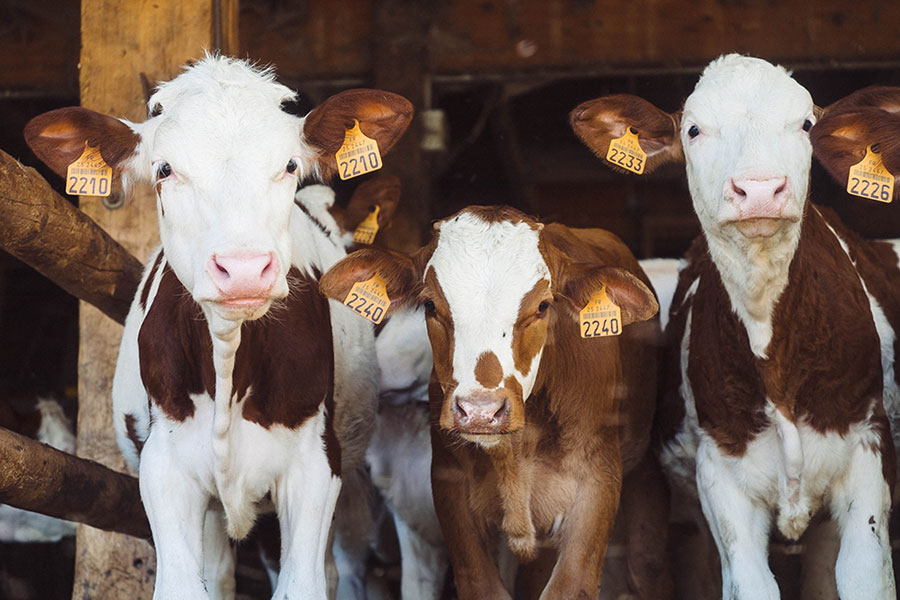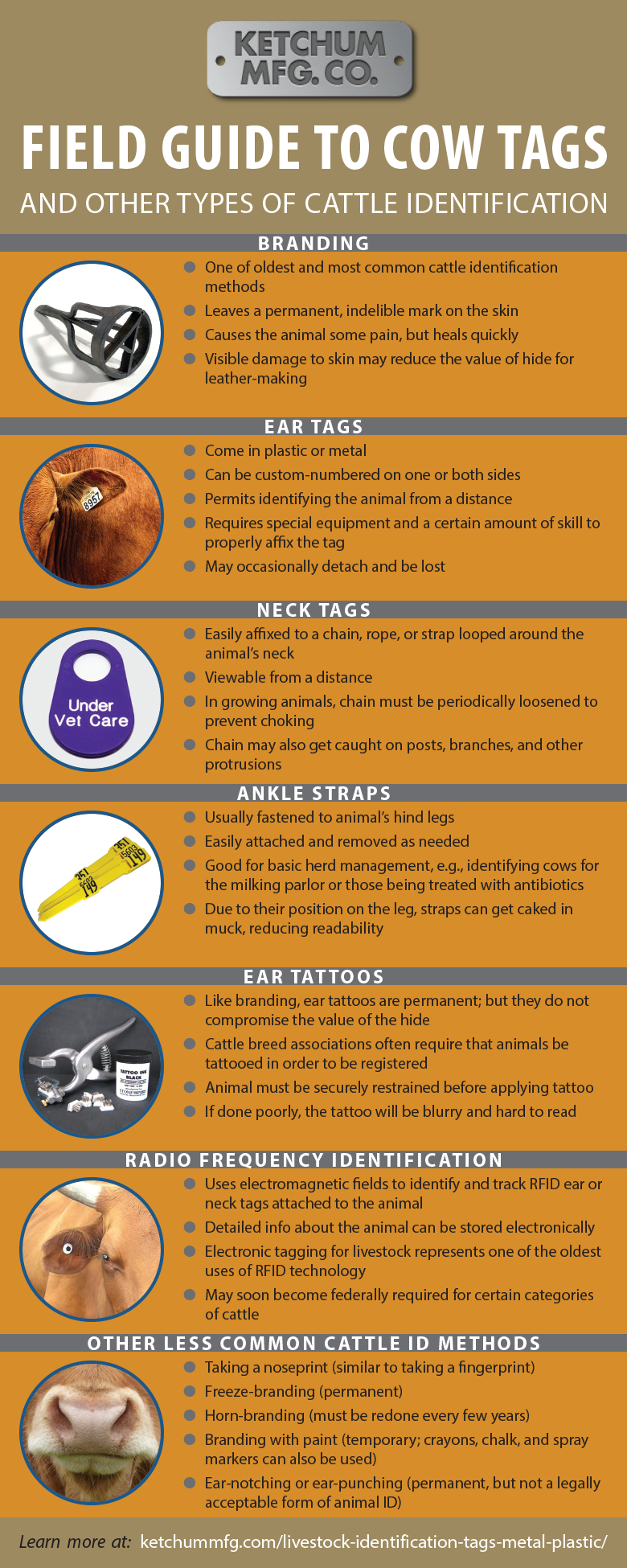Whether you own one head of cattle or thousands, it is important to manage your herd properly. At its most basic level, “herd management” means keeping track of your cows through some means of reliable identification. In previous centuries, this meant simply guarding against loss or thievery. One of the oldest methods of doing so was to mark the animals permanently with a brand, which left on the skin a unique identifying symbol to establish ownership of the animals.
Nowadays, the purposes for identifying cattle have multiplied. In addition to proving ownership, those who keep cattle should also maintain accurate records regarding performance, breeding, origin of the animal, its health, vaccination history, and intake of antibiotics and other medicinal treatments. Of particular importance is the need for “Animal Disease Traceability” (ADT), intended to help prevent the spread of brucellosis and other types of serious contagious infections among herds.
The methods available for identifying cattle have multiplied as well. Besides branding with a hot iron, there are various other types of tagging that can be done, including tattooing and affixing physical devices to cows and bulls. Cattle identification has even gone high-tech with the introduction of radio frequency identification (RFID) tags. And beyond the traditional system and symbology involving brands, there are four different numbering systems commonly in use today!
To complicate matters further, standards pertaining to cattle identification are uneven at the local, state, and federal level, and regulations are not always consistently enforced in different jurisdictions.
The three most important factors in choosing a method of cattle identification are:
- ease of application;
- legibility at a distance; and
- permanence of the marking method.
Unfortunately, no single marking method meets all three of these criteria. For that reason, it is vital to employ two (or more) complementary methods in marking one’s cattle. That way, if one method fails, there is a backup method to rely on. For example, an ear tag, which is easy to read from a distance, may come loose and get lost; but a brand, which requires proximity to the animal in order to be seen clearly, is permanent.
Ultimately, the method(s) chosen will depend on the owner’s primary objectives in marking their cattle, the level of permanence required, and the cost/convenience of application. It is beyond the scope of this article to discuss in depth all of the methods available. However, the “field guide” below provides a basic description of each of the most common types of cattle identification in use today, along with their advantages and disadvantages.
(Click on the image to download a printable PDF of the infographic.)








